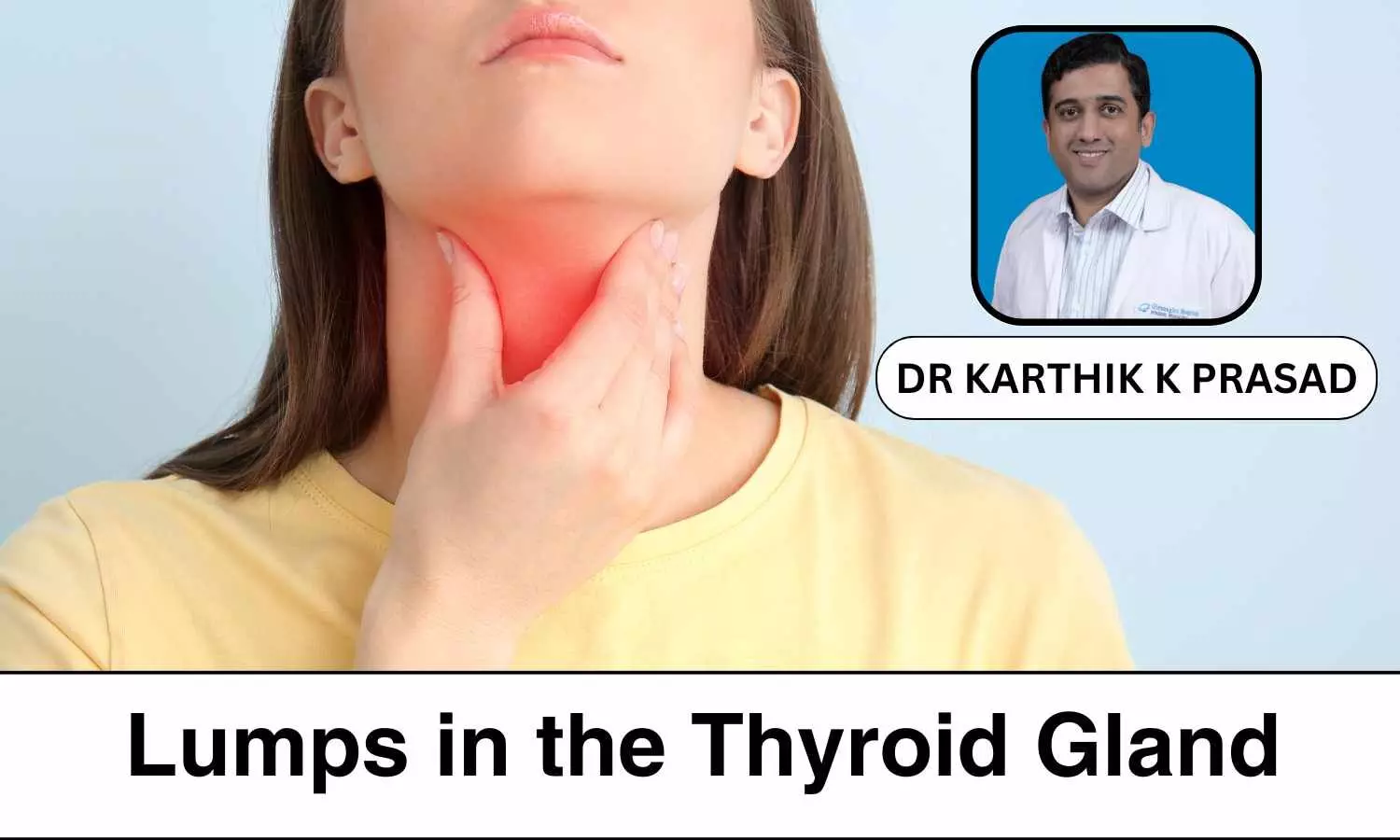Identifying and Managing Thyroid Nodules: A Comprehensive Guide - Dr Karthik K Prasad

“Doctor, my aunt has a swelling in her neck, she has a change in voice and is tired all the time”. What is her problem? This is a common case scenario encountered in general practice.
Thyroid disorders are one of the most common endocrine diseases in the world and in India too. Thyroid disorders are easy to detect and treat, early diagnosis is the key in the management.
A goitre may be an enlargement of the thyroid, or it may be the result of abnormal growth that forms one or more lumps (nodules) in the thyroid, referred to as thyroid nodule. The American Thyroid Association (ATA) defines the thyroid nodule as a discrete lesion within the thyroid gland. It is radiologically distinct from the surrounding thyroid parenchyma.
Thyroid nodule occurs in approximately 4-7% of the general population in iodine sufficient areas, with markedly increased incidence in iodine deficient areas. Other factors that lead to an increase risk of thyroid nodule are history of irradiation, family history of thyroid nodule or cancer and metabolic syndrome.
Thyroid nodules are approximately 4 times more common in women than men, and occur more often in individuals living in iodine-deficient geographic areas. The risk of malignancy in a patient with a thyroid nodule is estimated to be 5%–10%.
The pathogenesis of nodule formation is iodine deficiency-induced hyperplasia followed by the formation of functioning nodules that undergo haemorrhage and necrosis, replaced by lakes of colloid. Thyroid nodule develops as a result of imbalance between secretion and reabsorption of thyroglobulin leads to a disruption of the equilibrium and produces a thyroid nodule.
Thyroid nodules are identified incidentally on routine imaging done for a health check up or noticed by a bystander. Most thyroid nodules do not cause symptoms. Nodules can grow in size and can cause symptoms like; swelling in the neck, change in voice, difficulty in swallowing, difficulty in breathing, pain and very few cases may have a hyper-functioning or hypo-functioning thyroid gland.
Thyroid nodules are classified as solitary (a single nodule), multiple (more than one nodule), cystic (fluid filled) or solid. They may be benign (adenoma) or malignant (carcinoma).
Most thyroid nodules are benign (non-cancerous) but it is important to evaluate to rule out cancer. By differentiating benign and malignant lesions, unnecessary interventions can be avoided.
Initial evaluation for patients with a thyroid nodule should include history taking, clinical examination, thyroid function test, imaging and fine needle cytology (FNAC).
Clinical examination findings that should raise concern for malignancy include nodules larger than 4 cm in size, sudden change in the size, cervical lymphadenopathy, and recent change in voice or difficultly in swallowing.
Thyroid function tests; thyroid-stimulating hormone (TSH) measurement should be the initial test and is a useful guide for further management. A normal or high TSH commonly raises concerns on the risk of malignancy, and a low TSH usually favours a benign nodule.
Ultrasound of the thyroid is an imaging modality of choice used to evaluate thyroid nodules. They help in differentiating solid and cystic lesions, and also in identifying the malignant features like ill-defined margin, irregular shape, hypo-echogenicity, heterogeneity, the presence of calcification and so on.
FNAC is inexpensive, widely available and easy to perform, and is the gold standard for diagnosis and for the presence of malignancy.
Surgery for benign thyroid nodules may be considered when they are associated with compression symptoms, such as change in voice, difficulty in swallowing and cosmetic concerns. In very rare instances of diagnostic dilemma and concerns of malignancy, surgery is indicated.
Surgery is the first line of management for the thyroid cancers. Thyroid surgery is best performed by an experienced thyroid surgeon in a high volume centre to minimise the surgical risks such as transient or permanent hypocalcaemia and hoarseness or voice change due to recurrent laryngeal nerve injury.


